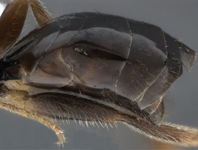Abstract
Although Simulium reptans Linnaeus is one of the first two blackfly species ever described its identity and taxonomy are still not precisely defined. S. reptans and closely related species from central and northern Europe were characterized based on genetic variability, haplotype number and haplotype distribution. S. galeratum can be considered a synonym of S. reptans, but despite this, two distinct species are present in Great Britain and central Europe. The available name S. reptantoides Carlsson can be used for the second species; earlier reported as S. reptans from Great Britain and central Europe. A total of 80 mitochondrial cytochrome c oxidase I gene sequences were analyzed: 44 S. reptans, 36 S. reptantoides; 38 from Great Britain, 19 from Slovakia, 8 from Lithuania, 3 from Latvia and 12 from Sweden. In 73 individuals a 606 bp section (long sequences), and in all 80 individuals a fully overlapping 453 bp section (short sequences) were analyzed. Results confirmed that S. reptans and S. reptantoides are two genetically isolated species. The variation between these species is 80.01% of total variation; approximately six times higher than the variation among the populations within species. The genetic divergence between species is 7.02% in long sequences and 7.46% in short ones. The genetic divergence within species is 1.18% in S. reptans and 0.83% in S. reptantoides in long sequences, and 1.38% and 1.05% in short sequences. Maximum likelihood trees, maximum parsimony trees and the haplotype network constructed using TCS showed that each species consists of two units, labelled as A and B forms. The distribution of the S. reptans forms is not identical—in Slovakia and the Baltic area only S. reptans B was found, meanwhile both A and B forms were present in Great Britain and Sweden; with the A form clearly dominant. In contrast, both forms of S. reptantoides were present in Great Britain and Slovakia, and absent in Scandinavia and the Baltic area. Additional studies comprising more individuals from larger areas of Europe are required to verify the taxonomic position of these species’ forms.

